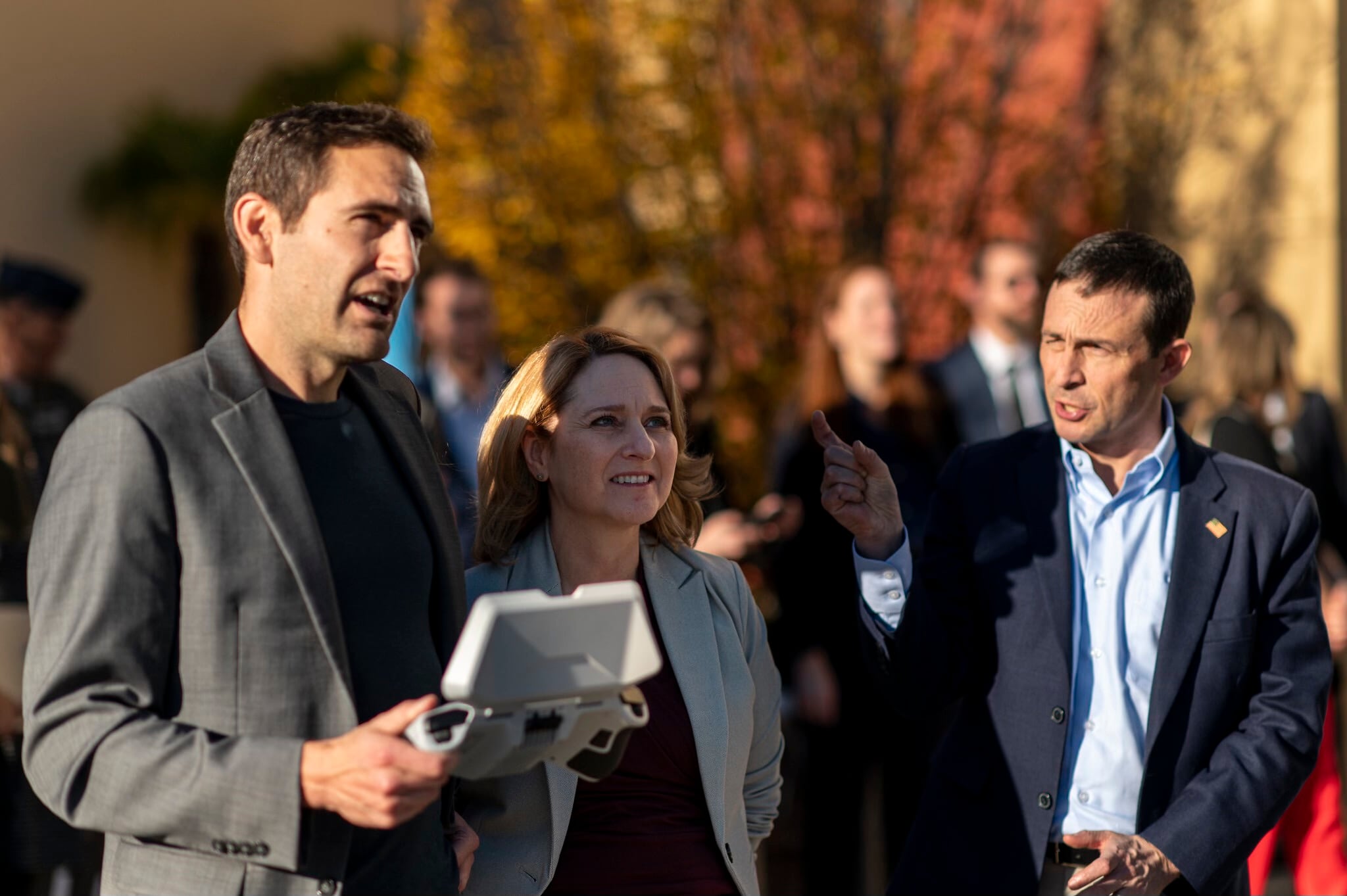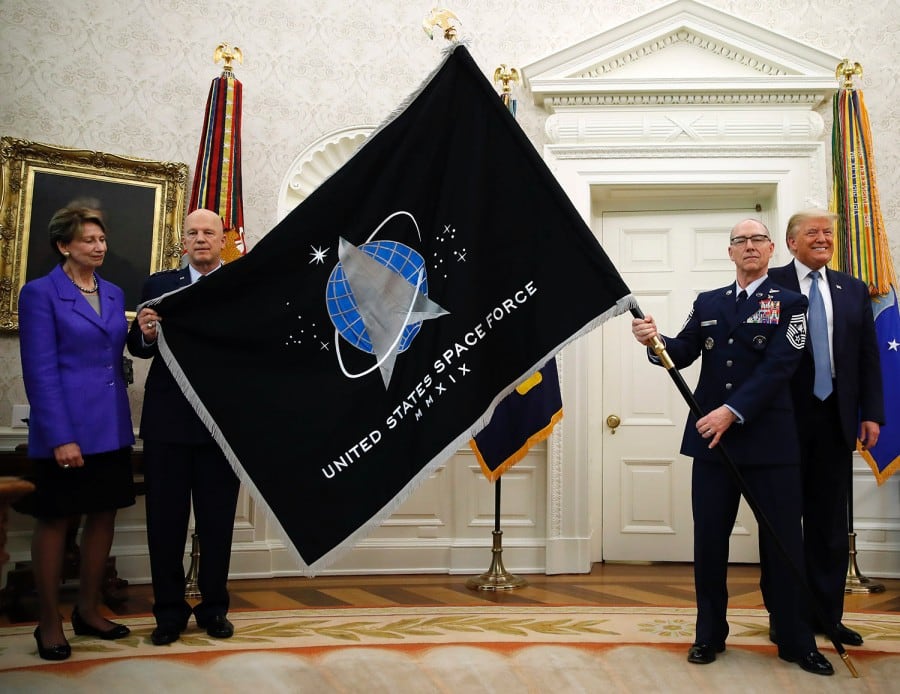Despite two intense decades of counterterrorism and counterinsurgency fight, the military has begun to focus on the possibility of a so-called high-end fight against near-peer competitors.
The recently released National Defense Strategy places “great power competition” as the No. 1 focus, placing it above terrorism.
With some leaders warning that the U.S. is losing its competitive edge relative to rising powers and near-peers, naval leaders discussed what their respective commands are doing to maintain superiority.
Information dominance
Given how the force has fought over the last 20 years, fighting in a contested radio frequency environment will “be fundamentally a different matter,” Vice Adm. Jan Tighe, deputy chief of Naval Operations for Information Warfare, told an audience at the West 2018 conference in San Diego, California, Feb. 6.
“Continuing to hone the skills of our team either in the electromagnetic maneuver warfare or on the IT/IP side of the house to be prepared to fight to establish assured command and control in that contested environment with the idea of space also being contested — that’s a huge hurdle and a huge step,” she said.
The Navy has begun to organize itself in the information warfare sphere, dating back to the establishment of an information warfare type command in 2014 and the stand up last year of the Information Warfare Development Center.
“We think about the types of capabilities that we want to put in the hands of the fleet, having a warfare development center to work the [tactics, techniques and procedures] and work the mission areas … that can then make those capabilities sing and help understand how to integrate information warfare capabilities in with the other warfare areas is a critical element and they are working today, every day with the other [warfare development center] and I think we’re going to see great return on investment there,” Tighe said.
“One of the most important things we’ve done in the past two years is stand up the Navy IWDC,” she told C4ISRNET in October.
“It’s not enough for us to sit up here at the Pentagon and think about what’s the work force that we’re going to need, think about the capabilities we need to arm them with. But the connective tissue really ultimately gets down to how are we going to train them, what are the TTPs that they must use to take advantage of these things and even feedback into the requirements process of what is it that we’re missing because it’s where the rubber meets the road and how you apply those techniques and capabilities. Be it a C4ISR capability or an electromagnetic maneuver warfare capability.”
That organization, she said, is the first step in codifying those TTPs, concepts and allowing the flow back into the requirements process in a more mature way.
Tighe told C4ISRNET following the AFCEA West panel that the IWDC has reached initial operational capability. She added that the center seeks to define concepts of operations, TTPs and doctrine to get them to the fleet and operational commanders “bridging the gap between acquisition, training and what are the more advanced concepts we have to be able to develop, to use those capabilities in an integrated way with all the other warfare areas.”
Air power
The head of naval aviation said he’s excited when he looks across the breadth of capabilities coming online.
Vice Adm. DeWolfe Miller III, commander of Naval Air Forces and Naval Air Force U.S. Pacific Fleet, said that the introduction of fifth-gen aircraft onto carriers and their mix with fourth-gen will make the force more lethal.
The EA-18G Growler, the military’s most advanced electronic attack fighting platform, is equipped with the next-gen jammer to make the force more survivable, he said.
The next-gen jammer is the colloquial name for a set of three pods operating in three different electromagnetic spectrum bands that together will replace the current legacy jammer.
The introduction of the E2D Hawkeye and advanced data links throughout the Navy will make the force more networked, he said.
Lastly, capabilities such as the forthcoming MQ-25 Stingray, the Navy’s first carrier-based unmanned aircraft, the forthcoming initial operational capability of the high-flying, long-endurance surveillance drone MQ-4C Triton, as well as the MQ-8 Fire Scout rotary wing unmanned aircraft makes the force more autonomous.
Subsurface power
Beneath the ocean’s surface is where some adversaries are developing startling capabilities.
The Navy’s undersea boss, Vice Adm. Joseph Tofalo, commander of Naval Submarine Forces, U.S. Atlantic Fleet and Commander and Allied Submarine Command, indicated that acoustic superiority will be a critical focus.
“I cannot overstate the importance of the acoustic superiority program,” he said. “When you boil it all down a submarine fundamentally turns acoustic superiority into tactical superiority. That’s kind of foundational for who we are — we’re not called the silent service for nothing.”
Tighe, who also serves as the Navy’s director of intelligence, has previously stated, “Our greatest need right now is in the undersea [mission] and the modernization of acoustic intelligence. That’s No. 1 … Uniquely understanding and being able to surveil and do analysis in the undersea is something the Navy has to bring in spades.”
This week she parroted that, noting “clearly understanding the undersea from an oceanographic perspective and then from an acoustics perspective, acoustic intelligence perspective and our ability to surveil in the undersea is going to be critical to meeting the challenges that we face there.”
Tofalo also explained the Navy is looking a family of unmanned undersea vehicles.
Moreover, he said there’s been a lot of work to develop an electronic warfare campaign plan to make sure policy, doctrine and training support systems are all very much focused on the EW portion, which will invariably be part of a high-end fight.
Mark Pomerleau is a reporter for C4ISRNET, covering information warfare and cyberspace.






